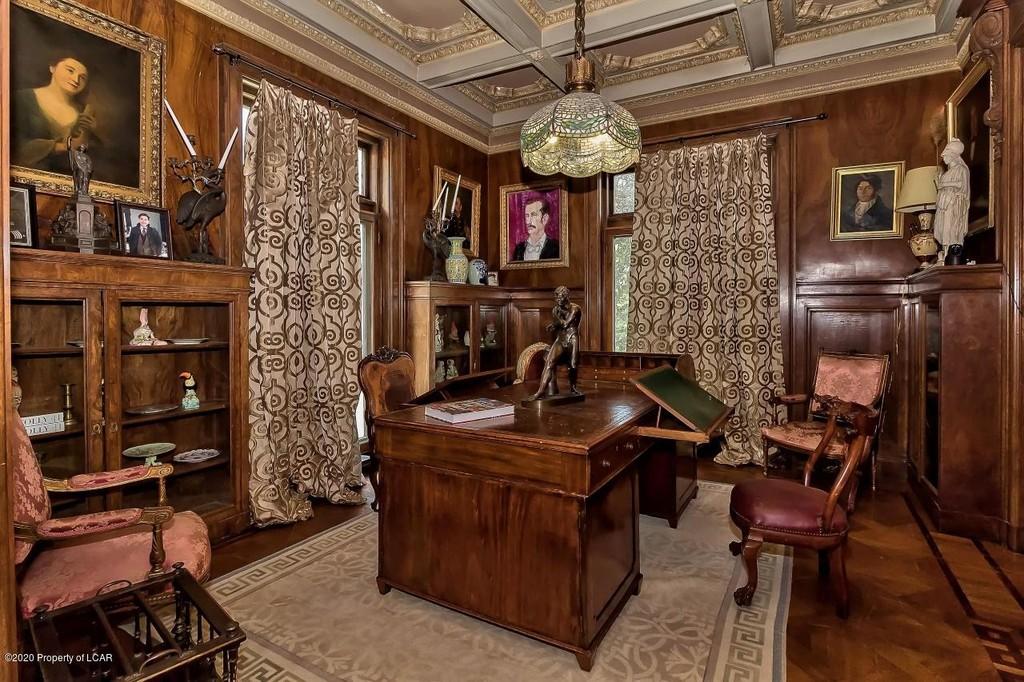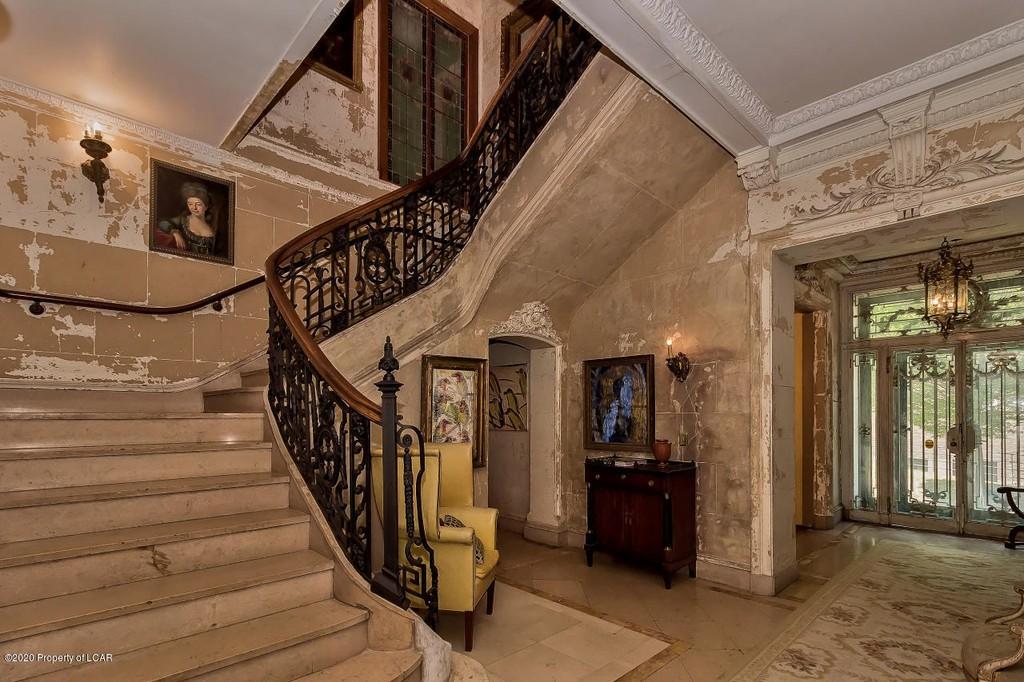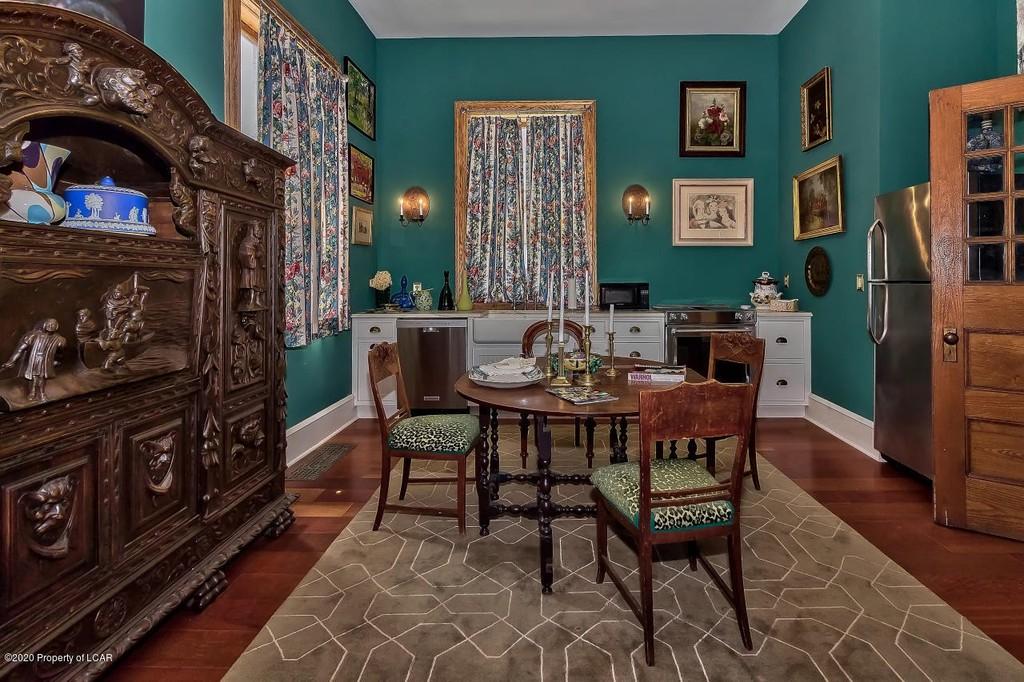Thanks to a well-known painter, a historically significant house has been artistically updated for the twenty-first century.
The elegant Woolworth Mansion on Jefferson Avenue in Scranton, Pennsylvania, is being sold by neoexpressionist painter Hunt Slonem for a price of $1.35 million. He has been renovating the property for the past five years since he purchased it in 2015.
Originally constructed in 1910 for Charles Sumner Woolworth, the co-founder of the Woolworth retail business, the house was named after him.
The mansion, which was 8,333 square feet in size and contained five bedrooms and 3.5 baths, had been mostly deserted for around eighteen years.
“My mouth dropped when I saw this house and asked, ‘What is that?'” Says Slonem. “The inside was a train wreck, but they had done a lot of work on the stonework.” I was astounded, but I also understood how big of a project it was.





Slonem has outfitted and renovated a number of other homes across the nation, including the 1897 structure known as the Scranton Armory, which he also owns.
“When I see these wonderful memories of bygone eras, when there was order in the world and a wonderful sense of quality,” he says, “my heart skips beats.” “I adore historic structures. I don’t get excited about modern architecture the same way.

Slonem is selling this, the first of his residences.
He says, “They don’t build them like this anymore.”
An eminent architect created this structure, claiming that the materials used were no longer accessible unless they were taken from dilapidated homes that were being demolished.
This property and a few others in the Scranton region were created by the architect Lansing Holden.
Listing agent Marion Gatto praises the historical accuracy of Slonem’s renovations, saying, “It truly is a unique property.”



Workers rebuilt roofs, fixed flooring that had been chewed away by beetles, and updated almost every aspect of the house—with one crucial exception.
“I leave the patina in the corridor, as you can see. The hallway’s magnificent, French, thickly plastered design is not something I repainted. According to Slonem, it appears to be a chateau from the 1700s.
You can always paint over it. You are unable to replicate the current appearance.

Slonem drew heavily on old photos for his remodeling projects. The kitchen was one of the areas, though, where there were no old photos.
“That room was completely empty. It had been ripped apart, according to Slonem. “Neither the location nor the appearance of the original kitchen are documented. There is no proof that it is located somewhere in particular.
Since Slonem freely acknowledges that he doesn’t enjoy cooking, the kitchen ends up being tiny in comparison to some of the other rooms. But like the rest of the house, it has benefited from the same level of attention to detail.


Here, color is everything. A number of Slonem’s own paintings and paintings from the 19th century cover some of the room’s brilliant walls. The artist is well-known for his paintings of butterflies, rabbits, and birds, and museums all around the world display his creations.
“I make an effort to give these initiatives life. You know, I’m renowned as a colorist. My profession is painting,” he says.
He claims that, in his capacity as an artist, these houses are “installations.”
He states, “I enter my work, and my work enters them.” “Truly, something needs a lot of love and light poured into it after being abandoned for such a long time.”